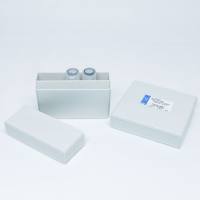Generation of Interspecific Hybrids of Trifolium Using Embryo Rescue Techniques
互联网
互联网
相关产品推荐

Recombinant-Arabidopsis-thaliana-Protein-TIC-40-chloroplasticTIC40Protein TIC 40, chloroplastic Alternative name(s): Protein PIGMENT DEFECTIVE EMBRYO 120 Translocon at the inner envelope membrane of chloroplasts 40; AtTIC40
¥12082

C6orf203抗体C6orf203兔多抗抗体Mitochondrial transcription rescue factor 1 antibody抗体C6orf203 Antibody抗体
¥440

Recombinant-Arabidopsis-thaliana-Mitochondrial-import-inner-membrane-translocase-subunit-TIM50TIM50Mitochondrial import inner membrane translocase subunit TIM50 Alternative name(s): Protein EMBRYO DEFECTIVE 1860
¥11900
![Recombinant-Arabidopsis-thaliana-NADH-dehydrogenase-ubiquinone-1-alpha-subcomplex-subunit-13-AMEE4NADH dehydrogenase [ubiquinone] 1 alpha subcomplex subunit 13-A
Alternative name(s):
Protein MATERNAL EFFECT EMBRYO ARREST 4](https://img1.dxycdn.com/p/s14/2024/1230/578/8691945264010663781.jpg!wh200)
Recombinant-Arabidopsis-thaliana-NADH-dehydrogenase-ubiquinone-1-alpha-subcomplex-subunit-13-AMEE4NADH dehydrogenase [ubiquinone] 1 alpha subcomplex subunit 13-A Alternative name(s): Protein MATERNAL EFFECT EMBRYO ARREST 4
¥10052

Recombinant-Arabidopsis-thaliana-Uncharacterized-protein-At4g29660EMB2752Uncharacterized protein At4g29660 Alternative name(s): Protein EMBRYO DEFECTIVE 2752
¥9702

